Round-leaf ragwort (Packera obovata, formerly Senecio obovata), of the Aster, Sunflower, or Composite (Asteraceae) family, is an herbaceous clonal species that bears bright yellow daisy-type flowerheads in early spring. The genus name honors John G. Packer, author of Flora of Alberta. The specific epithet, from Latin, means obovate (egg-shaped, but broader distally), in reference to the basal leaves. Other common names include round-leaf groundsel and spoon-leaf ragwort or spoon-leaf groundsel. In the U.S., the species occurs in a broad region from southeast Texas and southeast Kansas east to the Florida panhandle and New England states, excluding portions of the Mississippi Embayment. In Arkansas, round-leaf ragwort occurs primarily across the northwestern highlands half of the state, plus Crowley’s Ridge, in a wide variety of shaded to partially sunny habitats: mesic, wooded slopes and bottomlands, stream banks and terraces, bluffs, and ledges.
Round-leaf ragwort, from 1 to 2 feet tall, has white roots and slender shallow rhizomes. Each new rhizome produces a terminal clone. The density of a clonal colony varies from dense to scattered depending on habitat. In drier shaded woods, plants remain shorter and more scattered, while in sunny wetter sites, denser colonies form. Early in the growing season, leaf undersides, stems and flower buds are partly or totally purple, but become mostly light green by flowering time.
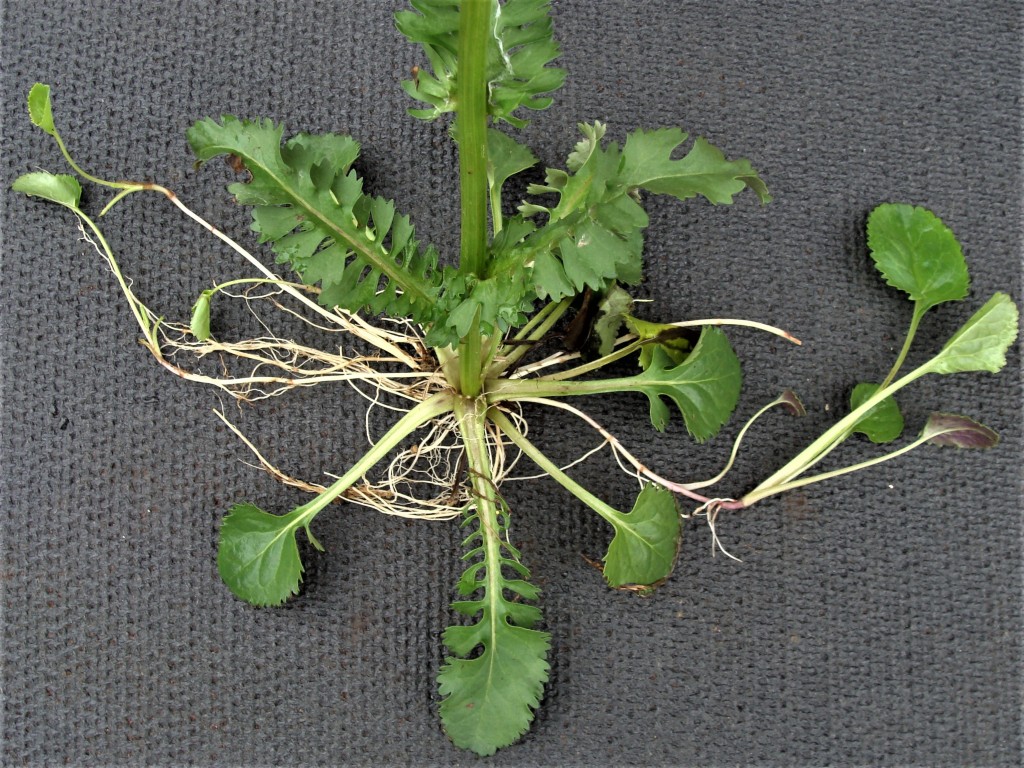
Non-reproductive plants have basal rosettes of ground-hugging (winter) to ascending (spring) leaves, while flowering plants have a single stem growing from the center of the rosette. Basal and cauline leaves have very different shapes, with the simple basal leaves quickly transitioning to the complex and variously shaped pinnate leaves of the stem. Cauline leaves, depending on stem height, are few in number (several to six) and spaced to 4 inches apart.
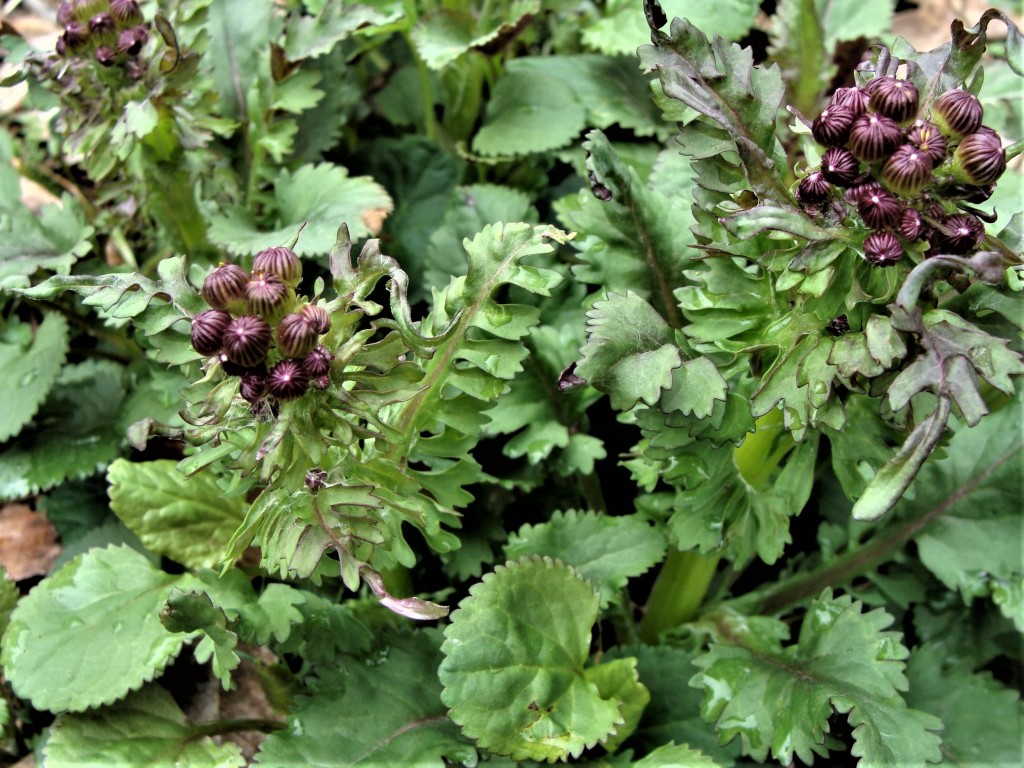
Glabrous basal leaves (to 4 inches long, including 2-inch petioles) have rounded, obovate blades (1 to 1¼ inches wide) with a truncate to tapering base and serrate-dentate margins. The leaf blade extends onto the petiole as a pair of narrow wings. Basal leaves remain through the winter months when new leaves and stems bearing the buds of flower heads first appear.
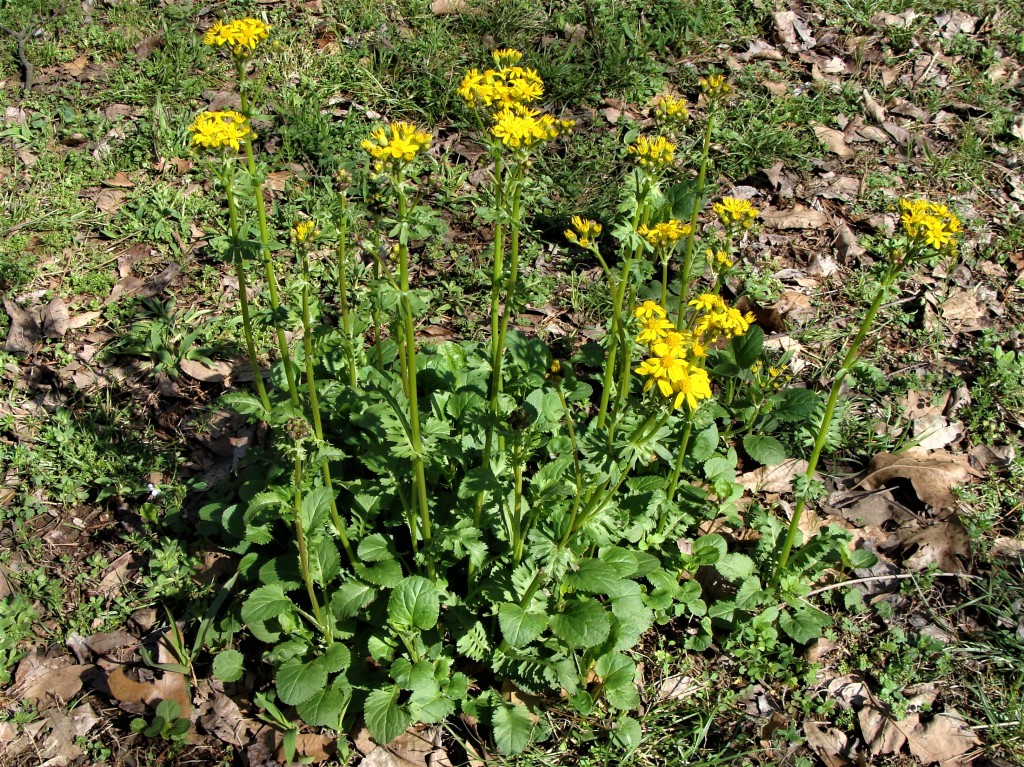
Cauline or stem leaves are sessile or nearly so, elongate, and pinnately shallowly to deeply, often irregularly divided. They are gradually reduced in length upward, the largest to 3 inches long and 7/8 inch wide. They tend to have long, cobwebby, appressed white pubescence on their upper surface near the base.

Flowerheads are loosely clustered in a flat-topped, typically compound corymb. Flowering begins with the terminal flowerhead and moves quickly outward, continuing for over a month or so. The full inflorescence of a stem may have 40+ flowerheads.
Buds of the flowerheads are round and knob-like, with prominent cup-shaped involucres (to ¼ inch long and ⅜ inch wide) with a single series of 12 to 20 linear, appressed phyllaries (bracts). While phyllaries are initially completely purple, with anthesis approaching, they become green from base to apex with the very tips still purple at anthesis.
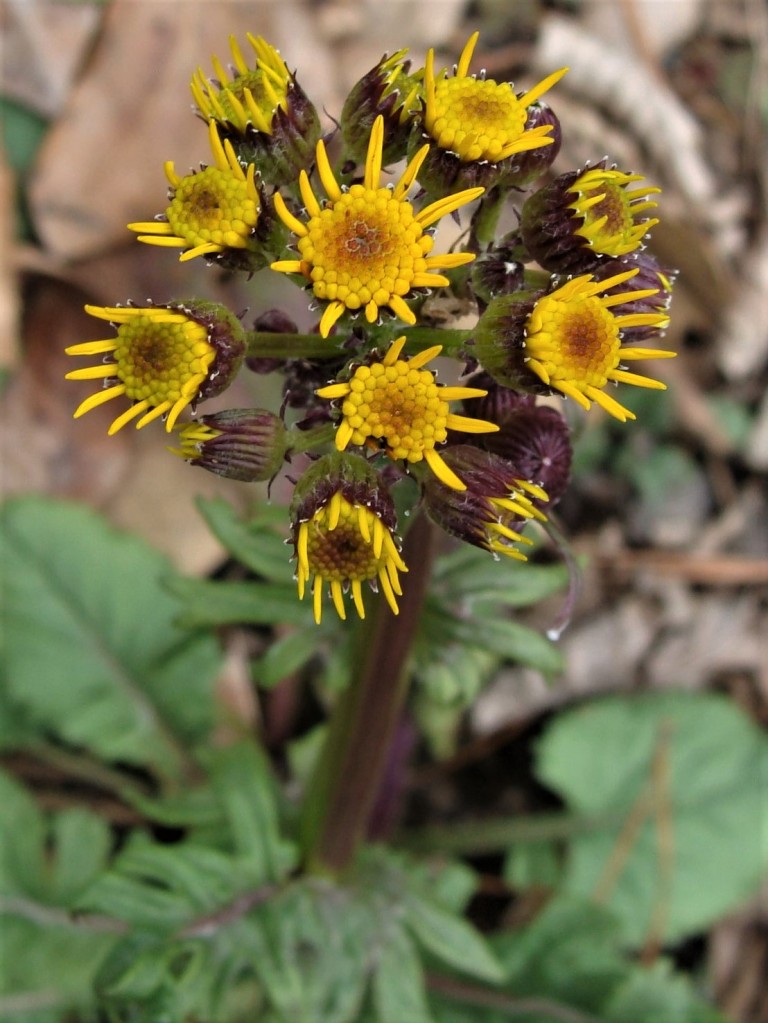
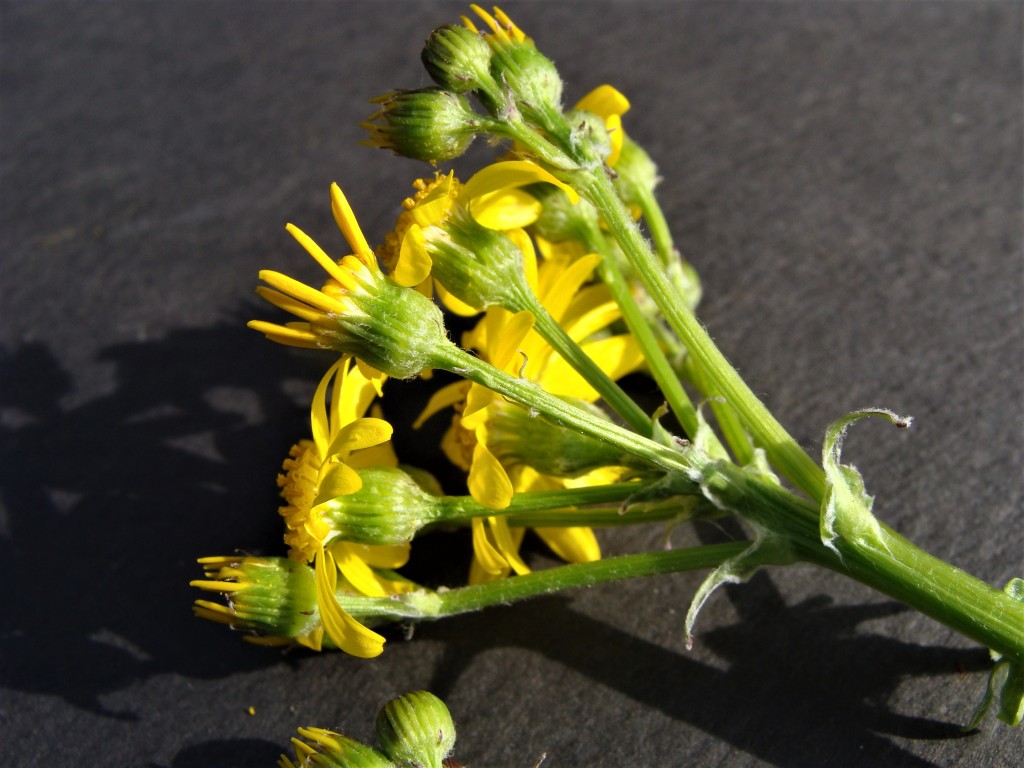
Flowerheads bear both ray and disk florets. They are ¾ to 1 inch in diameter. A central disk of 40 to 60+ yellow florets is surrounded by 8 to 14 bright yellow ray florets. Both ray and disk florets are fertile, with a pappus (modified sepals) of capillary bristles that encircles the top of the ovary. The pistillate (no stamens) ray florets are tubular below, with prominent ligules which flatten and become widely spread as the yellow styles divide (bifurcate) to expose two elongate stigmatic surfaces.
The perfect disk florets (with stamens and pistil) are tubular, to ⅛ inch long, with five short triangular corolla lobes, five stamens and a pistil. Stamens, also yellow, form an elongate central anther ring. The style, exserted through the anther ring, presents the floret’s pollen (to be carried away by pollinating insects), after which its apex divides to expose two long, now receptive stigmatic surfaces. The stigmatic surfaces quickly become covered with yellow pollen from other florets, other heads, and other plants, so that the disk appears powdery.
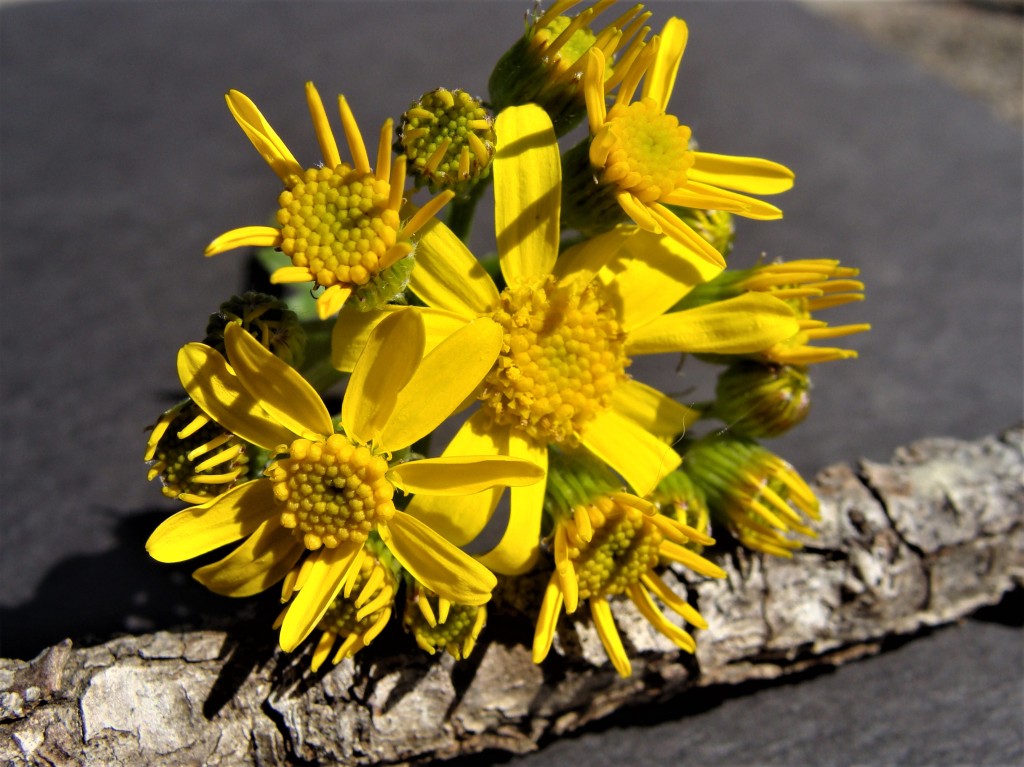
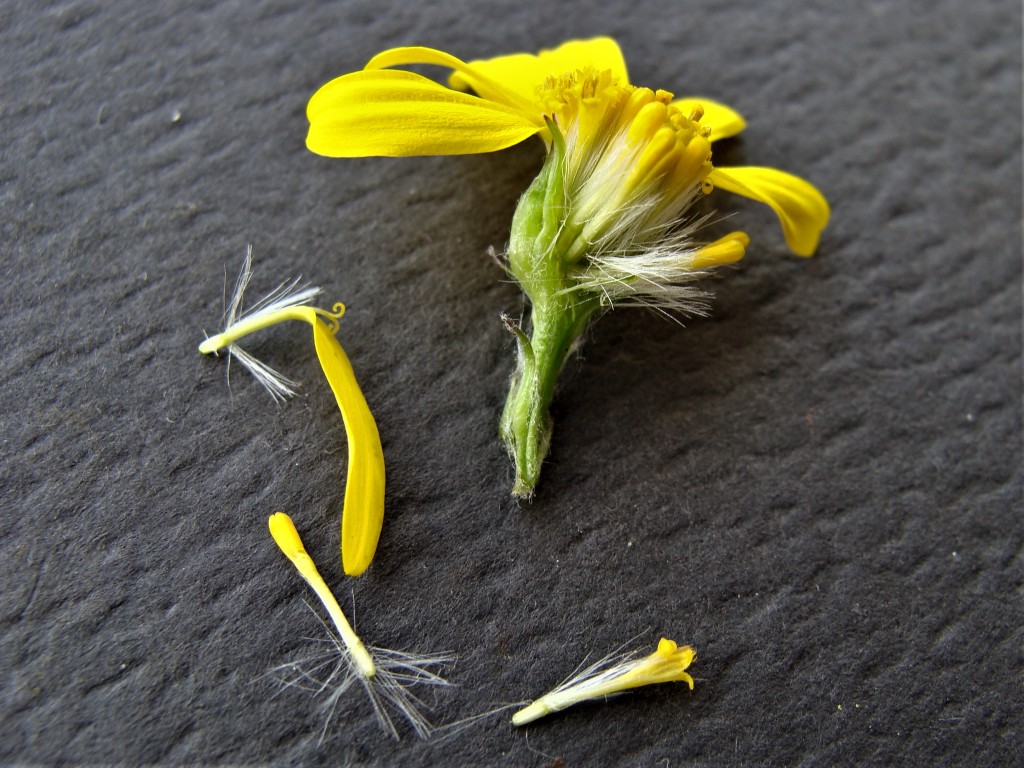
Fertilized ovaries of the ray and disk florets produce elongate ( ⅛ inch long) achenes (called cypselae in the aster family) topped with radiating bristles. When dry, the bristles give the inflorescence a white fluffy appearance. With light breezes, the achenes are wafted aloft for dispersal.
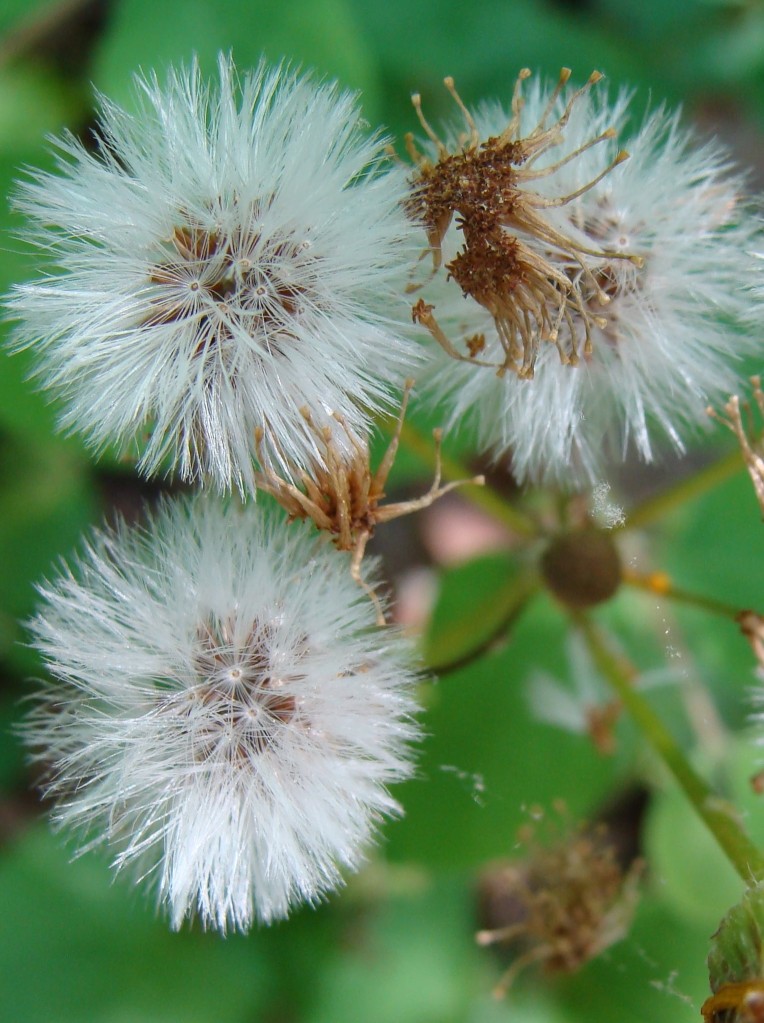
In a native plant garden or natural area, round-leaf ragwort gradually extends away from the parent plant as clonal plants appear. Should a plant become too aggressive in a more formal setting, it may require repeated attempts for total removal. With continued moisture, its basal leaves can form a semi-evergreen groundcover. Plants thrive in partially sunny to shady areas. Beginning in late winter, it has lush green leaves and erect stems topped with showy purple flowerhead buds. Heads in bloom as well as fluffy seed heads are also showy. Self-seeding seems to be limited; however, if desired, stems can be removed before seed set. This species is listed in the Pollinator Series of “Grow Native!”.
Six additional species of Packera occur in Arkansas: golden ragwort (P. aurea), cress-leaf groundsel (P. glabella), balsam ragwort (P. paupercula), prairie ragwort ( P. plattensis), Great Plains ragwort (P. tampicana), and woolly ragwort (P. tomentosa)––all with a similar growth habit and yellow flowers. Round-leaf ragwort can be distinguished by a combination of its obovate and short-petiolate basal leaves, rounded tips of the lower cauline leaves, generally glabrous stems, and woolly tomentose pubescence only at leaf bases and on the small leaves (bracts) within the inflorescence. Round-leaf ragwort most closely resembles P. aurea, except P. aurea has indented (cordate) basal leaves on long petioles.
Article and photographs by ANPS member Sid Vogelpohl

